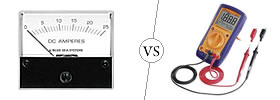Difference between MPEG and MPG
Key difference: MPEG stands for the Moving Picture Experts Group. One of the most commonly used MPEG formats is the .mpg or .mpeg. .mpg is one of a number of file extensions for MPEG-1 or MPEG-2 audio and video compression. The two formats are most commonly used for compressed video content with sound. They are commonly accepted on various platforms.
 MPEG stands for the Moving Picture Experts Group. It is a working group of experts that was formed in 1988 by ISO and IEC. It was a joint initiative between Hiroshi Yasuda of the Nippon Telegraph and Telephone and Leonardo Chiariglione. Chiariglione has served as the group’s Chair since the group’s inception.
MPEG stands for the Moving Picture Experts Group. It is a working group of experts that was formed in 1988 by ISO and IEC. It was a joint initiative between Hiroshi Yasuda of the Nippon Telegraph and Telephone and Leonardo Chiariglione. Chiariglione has served as the group’s Chair since the group’s inception.
The aim of MPEG was to set standards for audio and video compression and transmission. By 2005, the group has grown to include approximately 350 members per meeting from various industries, universities, and research institutions.
The standards as set by MPEG consist of different Parts. Each part covers a certain aspect of the whole specification. MPEG has standardized the following compression formats and ancillary standards:
- MPEG-1 (1993): Coding of moving pictures and associated audio for digital storage media at up to about 1.5 Mbit/s (ISO/IEC 11172). Designed to compress VHS-quality raw digital video and CD audio without excessive quality loss, making video CDs, digital cable/satellite TV and digital audio broadcasting (DAB) possible. It includes the popular MPEG1 Audio Layer III (MP3) audio compression format.
- MPEG-2 (1995): Generic coding of moving pictures and associated audio information (ISO/IEC 13818). Describes a combination of lossy video compression and lossy audio data compression methods, which permit storage and transmission of movies using currently available storage media and transmission bandwidth.
- MPEG-3: Dealt with standardizing scalable and multi-resolution compression and was intended for HDTV compression but was found to be redundant and was merged with MPEG2.
- MPEG-4 (1999): Coding of audio-visual objects. Includes compression of AV data for web (streaming media) and CD distribution, voice (telephone, videophone) and broadcast television applications. It includes the MPEG-4 Part 14 (MP4).
- MPEG-7 (2002): Multimedia content description interface. Not a standard which deals with the actual encoding of moving pictures and audio, like MPEG1, MPEG2 and MPEG4. It uses XML to store metadata, and can be attached to timecode in order to tag particular events, or synchronize lyrics to a song.
- MPEG-21 (2001): Multimedia framework. It is aimed at defining an open framework for multimedia applications. Based on definition of a Digital Item and users interacting with Digital Items.
One of the most commonly used MPEG formats is the .mpg or .mpeg. .mpg is one of a number of file extensions for MPEG-1 or MPEG-2 audio and video compression. The two formats are most commonly used for compressed video content with sound. They are commonly accepted on various platforms.
 The MPEG-1 and MPEG-2 is a standard for lossy compression of video and audio. A lossy compression means that while saving a file, there is a slight loss of quality due to compression. With each re-save there a slight loss of quality due to compression. Hence, it is not the greatest format in case one needs to keep making numerous edits and re-saves to the image. Still, if one only makes a few edits and the file is saved in a high quality format, the slight loss of quality due to compression is mainly negligible. An advantage to using this format is that due to compression, the file will take up less space for data storage.
The MPEG-1 and MPEG-2 is a standard for lossy compression of video and audio. A lossy compression means that while saving a file, there is a slight loss of quality due to compression. With each re-save there a slight loss of quality due to compression. Hence, it is not the greatest format in case one needs to keep making numerous edits and re-saves to the image. Still, if one only makes a few edits and the file is saved in a high quality format, the slight loss of quality due to compression is mainly negligible. An advantage to using this format is that due to compression, the file will take up less space for data storage.
The MPEG-1 standard consists of the following parts:
- Systems (storage and synchronization of video, audio, and other data together)
- Video (compressed video content)
- Audio (compressed audio content)
- Conformance testing (testing the correctness of implementations of the standard)
- Reference software (example software showing how to encode and decode according to the standard)
The difference between .mpeg and .mpg is just in the name. The reason for the different file extensions dates back to the early versions of Windows. The original file extension for the MPEG Format was ‘.mpeg’; however in Windows all files required a three letter file extension. So, the file extension was shortened to ‘.mpg’. However, Macintosh was not limited to three letter file extensions, so Mac users used ‘.mpeg’. Eventually, with upgrades Windows also began to accept ‘.mpeg’. However, many users were already used to ‘.mpg’, so both the three letter file extension and the four letter extension began to be commonly used, and still is.
Today, the most commonly accepted and used form is the ‘.mpg’, as many users were Windows users. Most applications now save MPEG files with a ".mpg" extension on both Mac and Windows, in an attempt to avoid confusion. The MPEG Format can also be saved with the upper-case ‘.MPEG’ and ‘.MPG’ file extensions, which are less common, but also accepted.
Image Courtesy: findicons.com, softicons.com









Add new comment